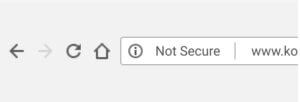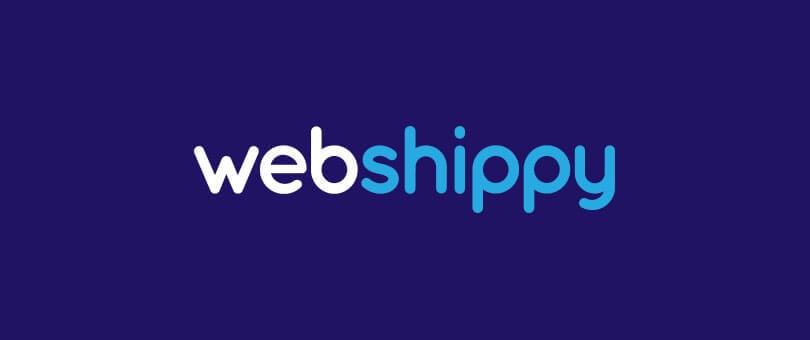Shopping online is just as popular nowadays as traditional, physical shopping. No wonder more and more people would like to establish themselves in the online space.
Before you get started, there are two crucial financial aspects to consider:
- The legal conditions of operating a webshop
- The cost of starting and operating your webshop in the long term
We will walk you through these key questions step-by-step, to fully understand and evaluate if it’s the way for you to go.
The first thing to consider is the costs of creating a webshop.
Starting an online shop is not as hard is many people tend to think at first. In comparison to a brick-and-mortar shop we can easily find that the cost of creating an online shop is lower and has way more potential considering that it’s not restricted to one place. We should start with finding who we would like to open our shop with.
Step 1: Cost of professionals
When speaking of professionals, we also mean a programmer and designer, who will create the webshop itself, along with its functions and visuals. In order to find the right professional, we must decide on the type of webshop to launch:
- A platform on rent
- A platform you develop yourself
What’s the difference?
In case of renting, for example Shoprenter, you’ll have numerous, ready templates to choose from. This is its greatest advantage and disadvantage at the same time. On the one hand, it is way cheaper than developing your own. At the same time, it is more generic and restrictive in terms of functions, so it will never be entirely personalized.
For our first webshop, with no experience, we advise you to start with the cheap, rental option. However, your decision depends on your budget, the type of online business you are launching, and a list of other aspects.
Cost:
- Rented: starting at a couple thousand HUF
- Self-developed: around 100.000 HUF
Step 2: Buying a domain
When you buy a domain, you basically register your company on the Internet. This is where people are going to find your website. In our case it’s https://webshippy.com.
Although ours is a “.com”, if you are targeting the Hungarian market, you might opt for a “.hu” one.
Cost: The cost of an available domain name is 2-3 thousand HUF a year. It’s not worth spending much more on it for a new business. If the domain name is already taken by someone else, your only option is to buy it from the owner. And the price is always set by him.
Step 4: SSL certificate
Step 4: SSL certificate
Encrypting client and server (basically creating shopping security) is a basic requirement since bank card information is being exchanged.
In addition, there are visible signs of a safe webshop. First, the URL begins with HTTPS (not HTTP). Secondly, popular search engines (such as Google Chrome, Firefox) notify the visitor in the case of unsafe sites.
This is what you can see in case of a safe site:
And this is what you see with an unsafe one:
Although encryption can be done later, it’s much more complicated than getting the certification immediately after you obtain your domain. To avoid problems later, we recommend that you deal with this in the beginning.
Cost: It starts at 2-4 thousand HUF and this is sufficient for the beginning. But there are free options as well. You should contact your storage provider for details.
The second step to consider when starting your webshop : the costs of operating the webshop.
In the previous section we’ve taken a look at all inevitable costs you can’t get away from. In this second part, we’ll talk about longer-term cost implications of operation.
Step 1: Pictures of products
In order to sell products on the internet, without having the possibility of touching them, you must present them in the most professional way possible.
You can even take these photos yourself with your smart phone since they take pretty high-quality pictures. The more expensive your product is however, the longer and more deliberated decision it evolves from the buyer, so your photos must be convincing and professional.
Consequently, selling high-quality, premium and more expensive products will entail higher costs for the photos as well.
Cost: A photographer costs about ten thousand HUF for a day’s of studio shooting. If you make calculations per product or picture, you’ll pay an amount between a couple hundred and a couple thousand HUF.
In case you’d like to shoot your photos at home to save on costs, read our article here: Product photos step-by-step – what you must-know about shooting at home
Step 2: Financial transactions
You must give buyers several different payment options for each purchase. These can be:
- Bank transfer
- Online credit card payment
- PayPal
- Cash on delivery
In most cases payment is made through a third party who charges commission.
Cost: 0.5 – 3% of the transaction, plus a one-time fee at signing, ranging somewhere between 20-60.000 HUF.
Step 3: Development - and maintenance costs
Unfortunately, the process is not over with buying the website and having it created by a web developer or designer. Webshops require constant development and adding new features to make them up-to-date and facilitate purchases.
There can also be minor failures in case of the server, for instance, if it’s not able to handle the increased demand and you need to replace it with a stronger one.
Cost: It is hard to define. The hourly rate of a developer can be anywhere between a couple thousand HUF and exorbitant rates. The more serious the changes being made on the site are, the more expensive the service is.
Step 4: Marketing
This is one of the most (if not THE most) important investments you make. If you make the right decision, it will have incredible return. Basically, by taking the steps we’ve covered so far, you’ll have a perfectly running, pretty webshop that can satisfy the demand. This brings us to the issue of demand…
This following step provides solutions you need!
Marketing has many elements to it. Unquestionably, search engine optimalization (SEO) has the largest rate of return (and for this reason, is most time consuming) that involves constructing your website to improve rankings in search engine (especially Google) results.
Another popular element is marketing on different social media platforms (Facebook, Instagram, Youtube, Linkedin etc.) to make your product visible to customers.
The list of marketing tools goes on and on, so it’s worth looking into and aligning it to your goals:
- Are you aiming for short-term or longer-term success?
- What’s your budget?
- Would you like to do it yourself or outsource the tasks? Maybe even create your own internal team?
If you’re looking for answers to these questions, I suggest reading this article on online marketing channels.
Cost: As we’ve said earlier, this is one of your most important investments. Regardless of your choice (yourself/agency/internal team), it will surely cost you money (or tremendous amounts of time).
A smaller campaign will set you back by a sum of at least ten thousand – but rather a hundred thousand HUF. Creating a serious marketing machinery behind a webshop that can automatically generate sales, takes us to magnitudes of millions.
Step 5: Customer service
During a purchase where trying the product in real life is not possible, many questions cross the buyers’ minds and they usually get posed as well. As long as we can manage, we can handle customer service tasks ourselves, but later we must hire a colleague to fulfill them.
Cost: If we handle the customer service tasks ourself, it will mostly cost us time. Afterwards, it will set us back by hundreds of thousands of forints.
Step 6: Warehouse and logistics
Depending on the type of webshop you have, you must think of the issue of storage and delivery.
In the case of small products, or orders in a low quantity, the situation is easier. However, you must consider renting a warehouse in the long-term. Or you can choose an outsourced logistics provider, like Webshippy.
Cost: starting at some ten thousand HUF all the way to sky-high prices.
Step 7: Accounting + legal fees
You need legal and accounting professionals even for operating a webshop. In most cases legal fees are very rare (often one-time charges), accounting on the other hand, is a regular, monthly charge.
Cost: Accounting can range from 10 000 HUF to hundrends of thousand HUF, determined by the type – and business flow of the webshop.
Legal fees are usually not more than a couple ten-thousand HUF and once the legal documents are prepared, if you’re lucky, you’ll not need any new ones for years.
The legal conditions of opening a webshop
Now that you have an understanding of the cost of starting/operating a webshop, let’s look into the legal conditions. First, the good news:
Very few things are needed to have your webshop. You will NOT need for instance:
- Special permits
- Operational permits
- Qualification
The barrier to entry is relatively low, but this doesn’t mean that there is nothing for us to do.
Step 1: Invoicing
That is to say that every accountable grown-up Hungarian citizen is able to start their online business in the form of any company type (sole- proprietorship, SARL, LP, S.A., Ltd.).
It is not possible as a private person, only on online market places.
Step 2: Registration
There are several things to register. First and foremost, the type of activity we intend on doing: most webshops are assigned the number 4791 TEÁOR, “Delivery, online retail business” category. You must register this at the competent notary (based on your head quarter’s address) at a price of 3000 HUF.
Second, if we are packaging our products, we must declare it to the tax authorities and pay an environmental product fee.
The third registration is needed in case your company deals with data-processing. As it is a vital part of marketing, it’s quite certain that you’ll have to deal with this at some point. You need to register this at NAV and National Agency for Data Protection.
Step 3: Data representation requirements and information
In the case of an online webshop the potential buyer can only get information from your product descriptions and communication. The responsibility of authorities is to ensure that this information is sufficiently provided.
But what information are you obliged to display?
- General information
- Obligatory information on the product
In addition, you must provide information on customers’ rights, therefore some items are added to the above list:
- Notification before delivery
- Obligation to send notification confirming order
- Data-protection information
- Warranty/guarantee
- Cancellation policy
As you can see, these issues require legal expertise, so we strongly advise you to get in touch with a lawyer who specializes in online-law to help you prepare these documents and fulfill all registration requirements.
Our in-depth guide has proven you that you can create a webshop that generates significant sales in the long-term, even at the cost of a couple hundred thousand forints. And as your sales increase, you’ll be able to invest more in development.

